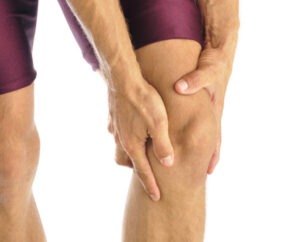ACL Reconstruction
 The Anterior Cruciate Ligament (ACL) is one of the important ligaments of the knee. Tear of the ACL is a common injury encountered in sports such as football, basketball, soccer, and skiing downhill, that involve a sudden change in motion, direction, and jumping.
The Anterior Cruciate Ligament (ACL) is one of the important ligaments of the knee. Tear of the ACL is a common injury encountered in sports such as football, basketball, soccer, and skiing downhill, that involve a sudden change in motion, direction, and jumping.
Mild ACL injury can be treated with rest and rehabilitation exercises. More severe forms of injury will require surgery to replace the torn ligament with a new one.
Thomas & Bigler Knee and Shoulder Institute, led by board certified orthopedic surgeons Dr. Steven C. Thomas and Dr. Gregory T. Bigler, provides orthopedic surgery to patients in Las Vegas, Nevada, while also serving areas such as greater Pahrump, Bullhead City, Lake Havasu, and Mesquite, NV.
ACL Grafts
To give you a new ACL, the surgeon will use part of a tendon – a tissue that resembles a ligament. This tissue is called a graft and ACL grafts can be of three types: hamstring tendon, patellar tendon, and donor grafts. Each type of ACL graft has its merits and limitations and the surgeon will recommend one type over the other based on the specifics of your injury.
Steps in ACL Reconstruction
ACL reconstruction is a surgical procedure performed on an outpatient basis by orthopedic surgeons. The steps in this surgery include:
Diagnostic Arthroscopy
In this first step, the surgeon inserts an arthroscope into the knee and examines the damage of the joint to confirm the ACL tear. If they find any damage of the meniscus and cartilage, they will treat these injuries too during the ACL reconstruction.
Harvesting and Preparation of the Graft
Harvesting involves obtaining a graft from either a donor or from another part of the patient’s body. The tissue to be used as the graft is prepared to meet the length and width requirements to convert it into the new ACL.
Creation of Tibial Tunnel and Femoral Tunnel
The surgeon then creates a space within the knee into which the ACL can be placed. Using a drill, they prepare a tunnel in the shin bone or the tibia. Through this tibial tunnel, the surgeon passes a drill down the middle part of the knee joint to develop another tunnel that extends until the thighbone or the femur. One end of the new ACL will be positioned in the tibial tunnel and the other end in the femoral tunnel.
Graft Positioning and Fixing
To position the new ACL, the surgeon uses a large pin with one end of the ACL attached to it. This is pulled into the femoral tunnel and that end of the ACL is attached to the femur. After the ACL is in position, it is secured in place using a screw that holds the graft within the tunnel.
After the femoral side of the graft is fixed, tension is applied to the graft end to make the graft tight. A similar procedure used to fix the tibial side of the ligament in place.
Recovery from ACL reconstruction surgery is a slow process. Patients have to wear a knee brace and move using crutches for many weeks after the surgery. They also require physical therapy to build knee strength and restore the knee’s entire range of motion.
Orthopedic surgeons Dr. Thomas and Dr. Bigler receive patients from Las Vegas, Nevada as well as greater Pahrump, Bullhead City, Lake Havasu, and Mesquite, NV for orthopedic surgery.
Contact Board Certified Surgeons Dr. Bigler or Dr. Thomas at the Knee and Shoulder Institute in Las Vegas, NV to Schedule an Appointment:
If you would like to schedule an appointment or learn more about the Knee and Shoulder Institute procedures & treatments performed by Las Vegas, Nevada board-certified surgeons Steven C. Thomas, MD and Gregory T. Bigler, MD. Contact the office today click here.
Serving patients from and around greater Las Vegas, Lake Havasu, Bullhead City, Mesquite, Pahrump, Nevada.
